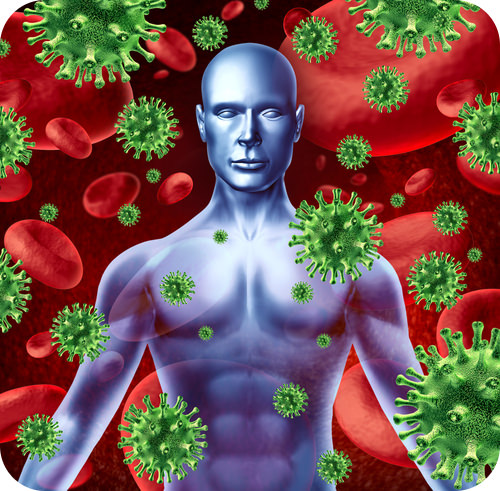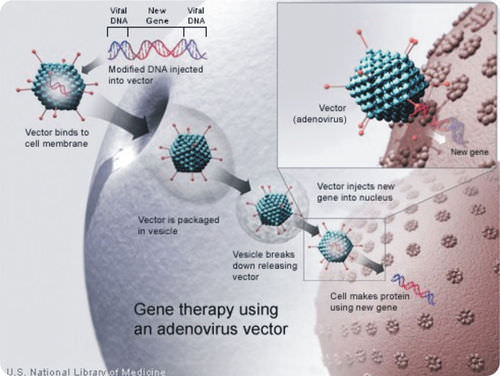7.8: Viruses in Research
- Page ID
- 12192

Can viruses be helpful, or just harmful?
Viruses are extensively used in research and medicine to both understand basic biology and to improve human health. Imagine having a tool that is able to inject its DNA into a host cell. The possibilities of using such a tool are endless. That tool would be a virus.
Viruses in Research
Viruses are an extremely important tool in the study of molecular and cellular biology. Since viruses infect cells by moving their genetic material into the host cell's nucleus, they are helpful in the investigation of the functions of cells. For example, the use of viruses in research has helped our understanding of the basics of molecular genetics, such as DNA replication, transcription, RNA processing, translation, protein transport, and immunology.
Viruses and Medicine
Geneticists often use viruses as vectors to introduce genes into cells that they are studying. A viral vector is a tool commonly used by molecular biologists to place genetic material into cells. To be a useful viral vector, the virus is modified so that it will not cause disease, and it will infect only certain types of cells. Phages are often used as vectors to genetically modify bacteria.
In a similar fashion, viral therapy uses viruses to genetically modify diseased cells and tissues. Viral therapy shows promise as a method of gene therapy and in the treatment of cancer. Gene therapy is the insertion of genes into a person’s cells and tissues to treat a disease. In the case of a genetic disease, the defective gene is replaced with a working gene. Although the technology is still new, it has been used with some success.
Scientists have focused on gene therapy for diseases caused by single-gene defects, such as cystic fibrosis, hemophilia, muscular dystrophy and sickle cell anemia. In gene therapy, the correct version of the gene is introduced to human cells by using a viral vector such as the adenovirus shown in the Figure below.
Phages have been used for over 60 years as an alternative to antibiotics in the former Soviet Union and Eastern Europe. They are seen as a hope against multi-drug-resistant strains of many bacteria because they can infect and kill these “superbugs”. However, in the case of MRSA (Methicillin-resistant Staphylococcus aureus), a phage infecting the bacterium produces a toxin that makes the bacterium more virulent and difficult to contain.
Viruses that infect cancer cells are being studied for their use in cancer treatments. Oncolytic viruses are viruses that lyse and kill cancer cells. Some researchers are hoping to treat some cancers with these viruses.
 Gene therapy using an Adenovirus vector. A new gene is inserted into an adenovirus vector, which is used to introduce the modified DNA into a human cell. If the treatment is successful, the new gene will get into the nucleus and into the target cell DNA to make a functional protein.
Gene therapy using an Adenovirus vector. A new gene is inserted into an adenovirus vector, which is used to introduce the modified DNA into a human cell. If the treatment is successful, the new gene will get into the nucleus and into the target cell DNA to make a functional protein.Summary
- Viruses are useful tools in scientific research and medicine.
- Viruses help us understand molecular biology. They are also used in gene therapy.
Review
- Why are viruses especially useful tools for understanding molecular biology?
- What have scientists learned by studying the viruses and their invasion of host cells?
- What is a viral vector? Are they harmful?
Resources
| Image | Reference | Attributions |
 |
[Figure 1] | Credit: Courtesy of National Institutes of Health Source: commons.wikimedia.org/wiki/File:Gene_therapy.jpg License: CC BY-NC |
 |
[Figure 2] | Credit: Courtesy of National Institutes of Health Source: commons.wikimedia.org/wiki/File:Gene_therapy.jpg License: Public Domain |

